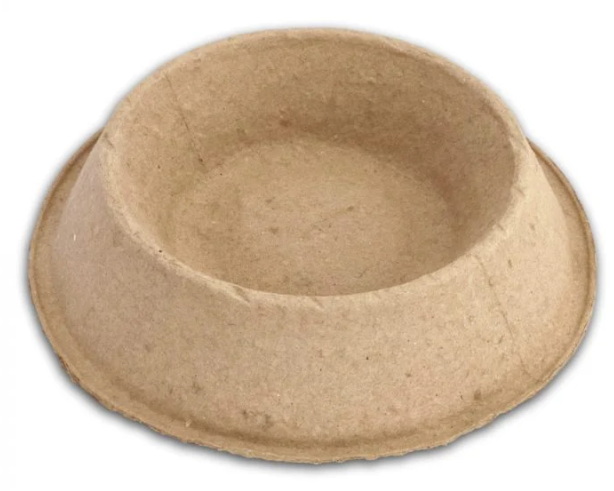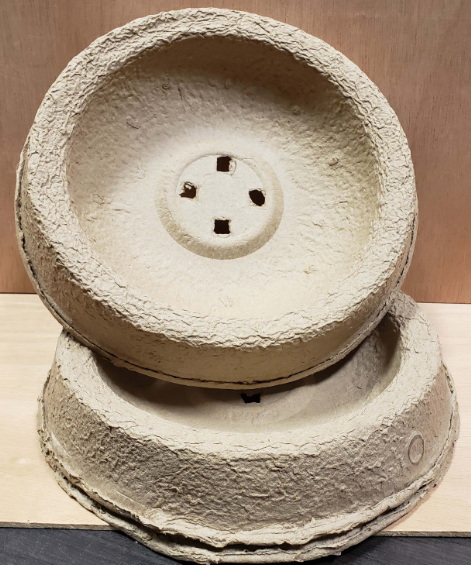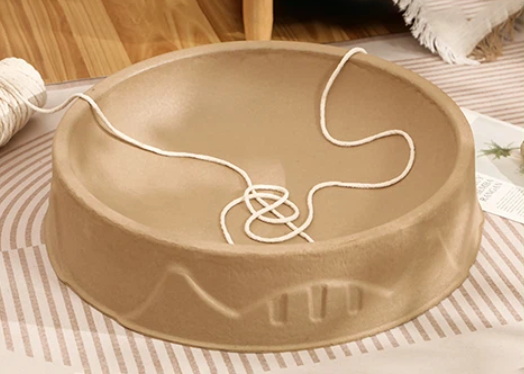
Content Menu
● Introduction to Disposable Nest Bowls
>> Materials Used in Disposable Nest Bowls
● Environmental Impact of Disposable Nest Bowls
>> Production Process
>> Waste Management
● Benefits of Using Disposable Nest Bowls
>> Reduced Plastic Waste
>> Lower Carbon Footprint
>> Safe for Wildlife
● Challenges and Limitations
● Future Perspectives and Innovations
● Market Trends and Consumer Behavior
● Impact on Local Economies
● Conclusion
● FAQs
>> 1. What materials are commonly used in disposable nest bowls?
>> 2. Are disposable nest bowls suitable for hot foods?
>> 3. Can disposable nest bowls be reused?
>> 4. How long do disposable nest bowls take to decompose?
>> 5. What are the environmental benefits of using disposable nest bowls?
In recent years, the world has seen a significant shift towards sustainable living, with a growing emphasis on reducing waste and conserving natural resources. One area where this shift is particularly evident is in the use of disposable tableware, such as disposable nest bowls. These bowls, often made from materials like paper pulp, bamboo, or sugarcane bagasse, are designed to be both convenient and environmentally friendly. But just how eco-friendly and compostable are these disposable nest bowls?

Introduction to Disposable Nest Bowls
Disposable nest bowls are a type of single-use tableware that has gained popularity due to their convenience and perceived environmental benefits. They are commonly used for serving food at events, parties, or even in everyday life. The primary materials used in their production include recycled paper, bamboo, and sugarcane bagasse, which are renewable resources.
Materials Used in Disposable Nest Bowls
1. Paper Pulp: Made from recycled paper, these bowls are biodegradable and can be composted. They are durable and resistant to scratches, making them suitable for both hot and cold foods. Paper pulp bowls are also cost-effective compared to other eco-friendly materials, which makes them more accessible to consumers.
2. Bamboo: Bamboo is a rapidly renewable resource that requires minimal water and no pesticides for growth. Bamboo bowls are lightweight, biodegradable, and compostable. They are also known for their aesthetic appeal, which can enhance the dining experience.
3. Sugarcane Bagasse: This material is a byproduct of sugarcane processing and is highly biodegradable. Bowls made from sugarcane bagasse are sturdy, leak-proof, and compostable. They are particularly popular for serving liquid foods due to their water resistance.
Environmental Impact of Disposable Nest Bowls
While disposable nest bowls are generally more eco-friendly than traditional plastic or Styrofoam bowls, their production and disposal still have environmental implications.
Production Process
The production of disposable nest bowls involves the use of natural resources and energy. For instance, paper pulp bowls require water and energy for processing recycled paper. However, these resources are often more sustainable than those used in plastic production. The carbon footprint of producing disposable nest bowls is typically lower than that of plastic bowls, contributing less to greenhouse gas emissions.
Waste Management
One of the significant advantages of disposable nest bowls is their biodegradability. They can be composted, reducing landfill waste and the environmental harm caused by non-biodegradable materials. However, proper disposal practices are crucial to ensure these benefits are realized. In regions with well-developed composting infrastructure, disposable nest bowls can be efficiently composted, returning nutrients to the soil and reducing waste.
Benefits of Using Disposable Nest Bowls
Reduced Plastic Waste
By choosing disposable nest bowls, consumers can significantly reduce their contribution to plastic waste. Plastic bowls are non-biodegradable and often end up in landfills or oceans, harming wildlife and ecosystems. The shift towards biodegradable alternatives helps mitigate this issue, promoting a cleaner environment.
Lower Carbon Footprint
The production of disposable nest bowls typically involves renewable resources and less energy compared to plastic bowls. This results in a lower carbon footprint and contributes less to greenhouse gas emissions. As consumers become more environmentally conscious, the demand for products with reduced environmental impact is increasing.
Safe for Wildlife
Unlike plastic, biodegradable materials used in disposable nest bowls do not pose a threat to wildlife. They break down naturally, reducing the risk of ingestion and harm to animals. This safety aspect is crucial for maintaining healthy ecosystems and biodiversity.

Challenges and Limitations
Despite their eco-friendly nature, disposable nest bowls face several challenges:
1. Cost: Eco-friendly materials can be more expensive than traditional materials, making them less accessible to some consumers. However, as demand increases, economies of scale can help reduce costs.
2. Perception: Some consumers may question the durability and performance of biodegradable bowls, especially with hot or liquid foods. Education and awareness campaigns can help address these concerns by highlighting the benefits and capabilities of these products.
3. Infrastructure: Proper composting facilities are not universally available, which can limit the environmental benefits of these bowls. Governments and businesses must invest in developing composting infrastructure to support the use of biodegradable products.
Future Perspectives and Innovations
The future of disposable nest bowls looks promising, with ongoing research into new materials and production techniques aimed at enhancing sustainability and biodegradability. Innovations in composting technologies and waste management systems will also play a crucial role in maximizing the environmental benefits of these products.
For instance, advancements in biotechnology could lead to the development of even more efficient biodegradable materials. Additionally, improvements in composting processes could make it easier and more cost-effective to recycle these bowls, further reducing waste.
Market Trends and Consumer Behavior
The market for disposable nest bowls is growing rapidly as consumers become more environmentally conscious. Events and festivals are increasingly adopting eco-friendly tableware to reduce their environmental footprint. This trend is expected to continue as more businesses and individuals seek sustainable options for their daily needs.
Moreover, governments are implementing policies to encourage the use of biodegradable products. For example, some cities have banned single-use plastics, creating a demand for alternatives like disposable nest bowls.
Impact on Local Economies
The production and use of disposable nest bowls can also have a positive impact on local economies. By supporting local manufacturers of eco-friendly products, consumers can contribute to job creation and economic growth in their communities.
Furthermore, the shift towards sustainable products can stimulate innovation and entrepreneurship in the green technology sector. This can lead to the development of new sustainable materials and production methods, further enhancing the eco-friendliness of disposable nest bowls.
Conclusion
In conclusion, disposable nest bowls offer a more sustainable alternative to traditional disposable bowls by being eco-friendly and compostable. While they present some challenges, their benefits in reducing plastic waste, lowering carbon footprints, and ensuring safety for wildlife make them a valuable choice for those seeking to live more sustainably.

FAQs
1. What materials are commonly used in disposable nest bowls?
Disposable nest bowls are typically made from materials such as paper pulp, bamboo, and sugarcane bagasse. These materials are chosen for their biodegradability and sustainability.
2. Are disposable nest bowls suitable for hot foods?
Yes, many disposable nest bowls, especially those made from paper pulp or sugarcane bagasse, are designed to be heat-resistant and suitable for both hot and cold foods.
3. Can disposable nest bowls be reused?
It is generally not recommended to reuse disposable nest bowls as they may lose their structural integrity and become unsafe for food use.
4. How long do disposable nest bowls take to decompose?
The decomposition time for disposable nest bowls varies depending on the material and environmental conditions. Typically, bowls made from natural materials like bamboo or sugarcane bagasse can decompose within 60 to 180 days.
5. What are the environmental benefits of using disposable nest bowls?
Using disposable nest bowls helps reduce plastic waste, lowers carbon footprints, and ensures safety for wildlife by avoiding the use of non-biodegradable materials that can harm ecosystems.

















